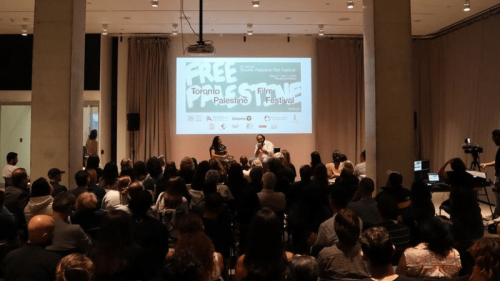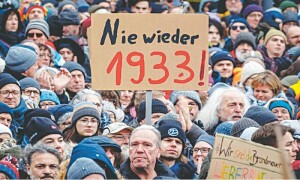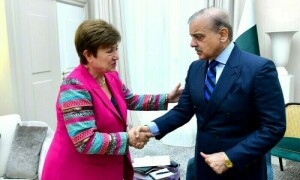SRINAGAR: The main city in the India-held Kashmir has turned into a vast maze of razor wire coils and steel barricades as drones and helicopters hover overhead.
Wearing flak jackets and riot gear, paramilitary soldiers carry automatic rifles and shotguns to control the network of checkpoints and barricades across roads, lanes and intersections in Srinagar. The few vehicles and pedestrians allowed through are regulated through this maze.
Although the four million residents of the Kashmir Valley, where an insurgency has simmered for decades, are used to blockades, the one imposed after the Indian government’s surprise move last week to strip the region of constitutional privileges is something residents say they’ve never seen before. Amid the labyrinth whose entry and exit points are changed frequently, people find themselves disoriented in their own city, and struggle to memorise its frequently changing street map.
“This is so vast, so expansive,” resident Zameer Ahmed said as he prepared to enter one barbed passageway. “The entire Srinagar city has been knitted in razor wire to seek our silence and obedience.”
The lockdown in the valley has been in place since last week, when New Delhi scrapped the disputed Himalayan region’s special constitutional status, taking away the final vestige of the political autonomy and privileged rights to land ownership and public sector jobs it was granted when the region joined the newly formed republic of India after independence from the British in 1947.Even before India’s Parliament voted Aug 5 to strip held Kashmir’s statehood and split it into two union territories, the central government imposed a curfew, suspended telephone and internet services and deployed tens of thousands of additional soldiers to the region already one of the world’s most militarised zones.
At checkpoints throughout Srinagar, police politely gave directions to a labyrinth whose entry and exit points are changed several times a day.
Mohammed Maqbool, an engineer, marvelled at the blockade system, the most intricate he said he’s seen in 30 years in Srinagar.
“This time they’ve put in place the smartest blockade ever,” he said. “They aren’t aggressive compared to the public uprising of 2016. If you must, they also allow you to venture out of home, yet they’ve throttled our voice by such a sophisticated blockade.” Razor wire divides neighbourhoods, discouraging people from assembling. Some roads are blocked by perpendicularly parked armoured vehicles or private buses. Because of the complexity of the security forces’ one-way system, it is impossible to use the same route and return home from any particular destination, even if it is within sight.
“They’ve changed the road map of our city, trying to make us like strangers in our own neighbourhoods,” said Bashir Ahmed, a resident of downtown Srinagar.
“This is a drill about disciplining and regulating people’s movement. This is to psychologically break people and teach them that they’re not in control of their own bodies,” said Saiba Varma of the University of California, San Diego, who is in Srinagar for post-doctoral research in medical anthropology.
“In Palestine, the (Israeli) blockade has restricted food and medicine. But here it’s different. They’re letting people eat but trying to control Kashmiri bodies, minds and spirits,” Varma said.
Some of the restrictions have been lifted elsewhere in the region, such as the Hindu-majority area of Jammu, where people were seen cheering the move by the government in street celebrations last week.
Authorities have refused to share any details about the checkpoints or new methods used for the latest blockade. Government officials maintain that the situation is returning to normal, and that no one has died or been seriously injured in any of the sporadic protests that have broken out since the blockade began. Because of constraints on movement and communication, it was not possible to verify their claims.
Published in Dawn, August 14th, 2019














































